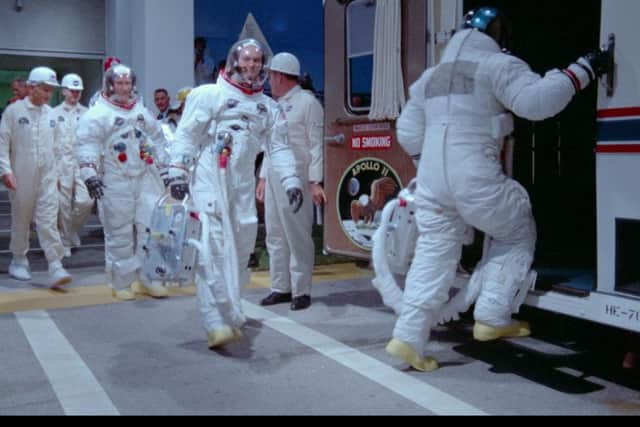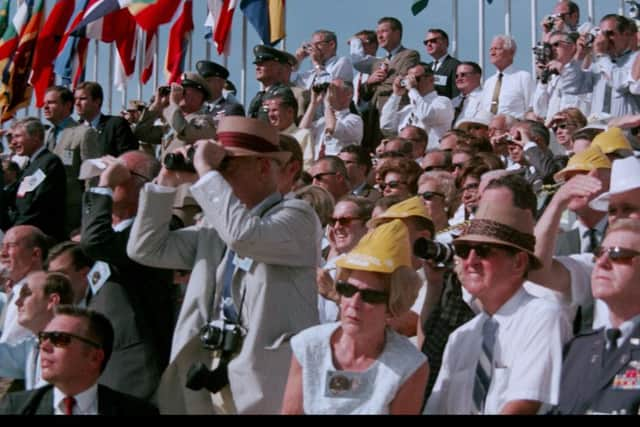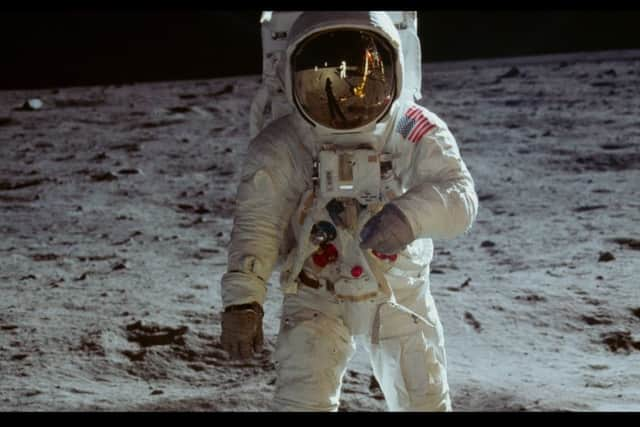Apollo 11 and the first moon landing 50 years on
But this was also a century of unprecedented scientific and technological progress, the crowning achievement of which came in 1969, at the end of that tumultuous decade, when Neil Armstrong took a small step for us all and in doing so left an indelible mark on human history.
Next month, marks the 50th anniversary of the moon landings which will no doubt reawaken old memories for many. Five hundred million people sat huddled around TV sets all over the world watching history unfold before their very eyes, and footage from that fabled day has since been replayed, along with Neil Armstrong’s immortal lines, over and over again.
Advertisement
Hide AdAdvertisement
Hide AdIt’s something we never tire of, and rightly so. Less than a quarter of a century after the end of the Second World War, mankind was capable of sending a man to the moon.


It’s an astonishing story of endeavour, determination and courage and it’s one that is captured in a new documentary film – Apollo 11. The 93-minute documentary, directed by Todd Douglas Miller, includes some never-before-seen, newly digitised footage, along with more than 11,000 hours of uncatalogued audio recordings.
It takes audiences on this epic journey once more and features the perspectives of the astronauts, the team in Mission Control and the millions of spectators on the ground.
The story behind the making of the film is interesting in itself. The original source material was 70mm wide format film and was held by Nasa before being transferred to the National Archives in the United States.
Advertisement
Hide AdAdvertisement
Hide AdThis raw footage was kept in safe storage but then more or less forgotten about. Then an independent archivist and filmmaker, Stephen Slater, who lives in Sheffield, contacted Miller about marking Apollo 11’s landmark anniversary. They had already gathered footage for other projects and began working on what they initially thought was going to be an art film.


However, when Miller contacted Nasa and the National Archives for access to their archival material, it led to the discovery of this long forgotten large format footage.
Dan Rooney, an archivist at the National Archives, discovered the reels labelled ‘Apollo 11’ which had been sitting untouched in a cold storage facility.
“When we got an email saying they had just found 165 reels of 70mm film of the Apollo 11 mission, I couldn’t believe it,” says Slater, who works as an archivist on the documentary.
Advertisement
Hide AdAdvertisement
Hide AdNo one knew exactly what was on the reels but it quickly became apparent they were a veritable mine of treasures, including backroom footage of Nasa staff helping a nervous yet genial affable Neil Armstrong get in his space suit and the sight of flight controllers speaking from Mission Control.


A film team from Nasa also captured the estimated one million people who turned up to watch the launch from the Kennedy Space Center in Florida. This was the same film team that documented the astronauts preparing for the launch, for a project named Moonwalk One.
They filmed nearby beaches, parking lots as well as the VIP and Press areas, and though this footage had been seen previously it was cropped, whereas this is much more expansive and gives us a wider view of who and what was being filmed.
There are more details so for instance, we can spot people like Johnny Carson and science fiction writer Isaac Asimov among the spectators.
Advertisement
Hide AdAdvertisement
Hide AdWe can also see the clothes people wore and the cars they drove – there’s even a shot capturing the reflection of the launch in the sunglasses of spectators as the rocket soared skywards.
Slater believes what makes the footage so fascinating is it tells the story as it took place. “There aren’t any interviews with the astronauts, it’s about the real time experience of what happened on that day,” he says.
His own personal interest in space travel started at an early age growing up in the Peak District. “I went to watch Apollo 13 as an eight-year-old child and remember being wowed by it and the bravery of the astronauts and the team on the ground and I loved watching programmes about space and the planets at school.”
Slater went on to become an archival producer for a series of high-profile documentaries and produced and directed the BBC four documentary Destination Titan, about the Huygens probe landing on Saturn’s largest moon.
Advertisement
Hide AdAdvertisement
Hide AdHe’s proud to have been part of the team that has pieced Apollo 11 together. “In the past the technology to scan this film and convert it to digital didn’t exist, but now it does,” he says.
“The footage is really quite visceral, it makes you feel like you are there. We had five per cent of the visual information before, and now we have one hundred per cent.”
The film premiered this spring at the Sundance festival and earned some rave reviews.
“A lot of people came up to us afterwards and thanked us for what we’d done. One woman was in tears. Some of them couldn’t believe that this was actually film from 1969, they thought it must have been a movie. But it’s not, this is the real thing.”
Advertisement
Hide AdAdvertisement
Hide AdSlater, though, is quick to play down his role in all this. “It’s not down to us it’s down to the amazing guys who filmed it. It’s the skill of the cinematographers of the day.”
There are, of course, still some people who believe the moon landings were a hoax, but Slater, perhaps not surprisingly, has little time for the naysayers. “If people are crazy enough to believe that in the first place then nothing is going to convince them differently.”
Instead, he wants to focus on this remarkable moment in human history – the original Apollo 11 mission involved almost 40,000 people and a staggering 20,000 different companies in what was a triumph of co-operation – something we could do with more of today.
“In a thousand years time when people ask about the moon landings we’ll able to show them this and say ‘this is how we went to the moon,’” says Slater.
Advertisement
Hide AdAdvertisement
Hide Ad“It sparks memories for those who watched it at the time and it gets a new generation to appreciate what they achieved in the 60s with such rudimentary technology.
“They didn’t have mobile phones or the modern technology we have today, but they were still able to send a man to the moon.
“It’s one of the greatest stories ever told and it deserves to be retold.”
Apollo 11 will be released in cinemas across the UK on June 28.